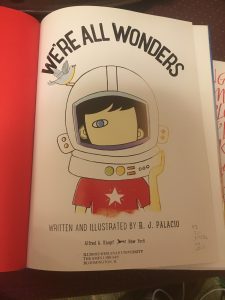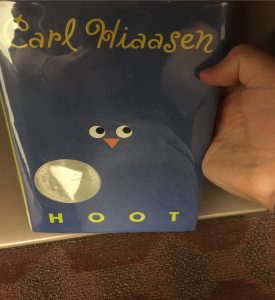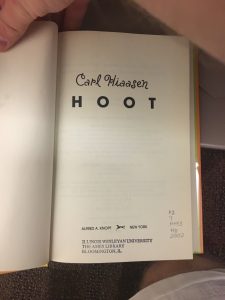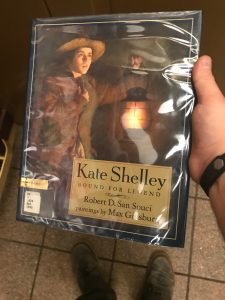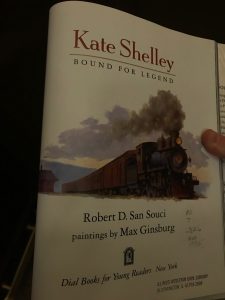Author(s) Illustrator/Photographer: written and illustrated by R.J. Palacio
Publisher and Year Number of pages: Alfred A. Knopf, 2017, 29 pages.
Genre: Realistic Fiction
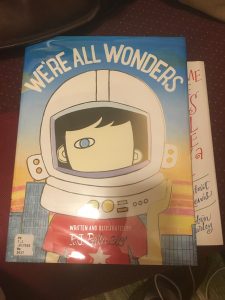
Descriptive Annotation: The cover features a simple artistic rendering of a boy with a facial deformity inside a giant white astronaut’s helmet, very similar to the cover artwork of another famous book by R.J. Palacio, Wonder, which features similar cover artwork in a less elaborate design. The lush sketches featured on the cover continue for the whole of the book, and the results are pleasing to both the eye and the heart. As for the book itself, it involves the story of Auggie Wonder, the protagonist of Wonder, who is used to being an ordinary kid that just happens to have an extraordinary face, and a lovable dog named Daisy. Whenever Auggie is sad about how he is not the same as other kids at his school, he is reminded by his family of his true potential: “My mom says I’m unique. She says I’m a wonder. My dog, Daisy, agrees!” (Palacio, p. 10). Eventually, despite this encouragement, Auggie has to decide whether or not to face the bullies who say cruel things about his condition face to face, or take a break from it all. Auggie goes with door number two: “It hurts my feelings. It hurts Daisy’s feelings, too. When that happens, I put on my helmet. I put Daisy’s helmet on, too. And then we blast off!” (Palacio, pgs. 14-18). Out in space, Auggie gets a much better perspective of how big the world is, and sees that “Earth is big enough for all kinds of people” (Palacio, p. 24). He takes this knowledge back down to his fellow kids, and they start to realize that they, too, are all wonders in their own special ways and should treat another with care and respect. No background knowledge is necessary to enjoy this book, but leafing through this wholesome tome may spark an interest in the full novel to be read, which is never a bad flame for an educator to spark.
Classroom Application: Since the book makes the mutual respect of all an enormous priority by depicting kids of completely different backgrounds on the playground and in its text, it’s an ideal text to teach lessons on being decent to one another and not bullying. The author/illustrator also demonstrates that sometimes it is right and just to withdraw from a situation to decompress and take stock. Direct action towards bullies is never good if pursued in anger; one must “look with kindness and…always find wonder” (Palacio, p. 29). One possible lesson after reading the book would be to tie it into school anti-bullying campaigns, and then also review the classroom bullying standards and see if they need to be revised in any way, shape or form. Students would also do well to recognize, as Auggie does, that minds can be changed, and perceptions altered, and how to best go about changing them is always dependent on the situation.
Linguistic and Cultural Diversity Analysis: The book is diversely cast; on page 8, children of every race and faith are depicted with a high degree of accuracy and tact. The unique cultural blend of each school, therefore, can easily fit into the framework of the picture book and be used to great effect in any classroom, regardless of subject. Palacio does a great job explaining how tolerance works to the reader through the simple depiction of all the different groups peacefully coexisting; the only outlier is Auggie, and eventually, the children overcome that difference as well.
